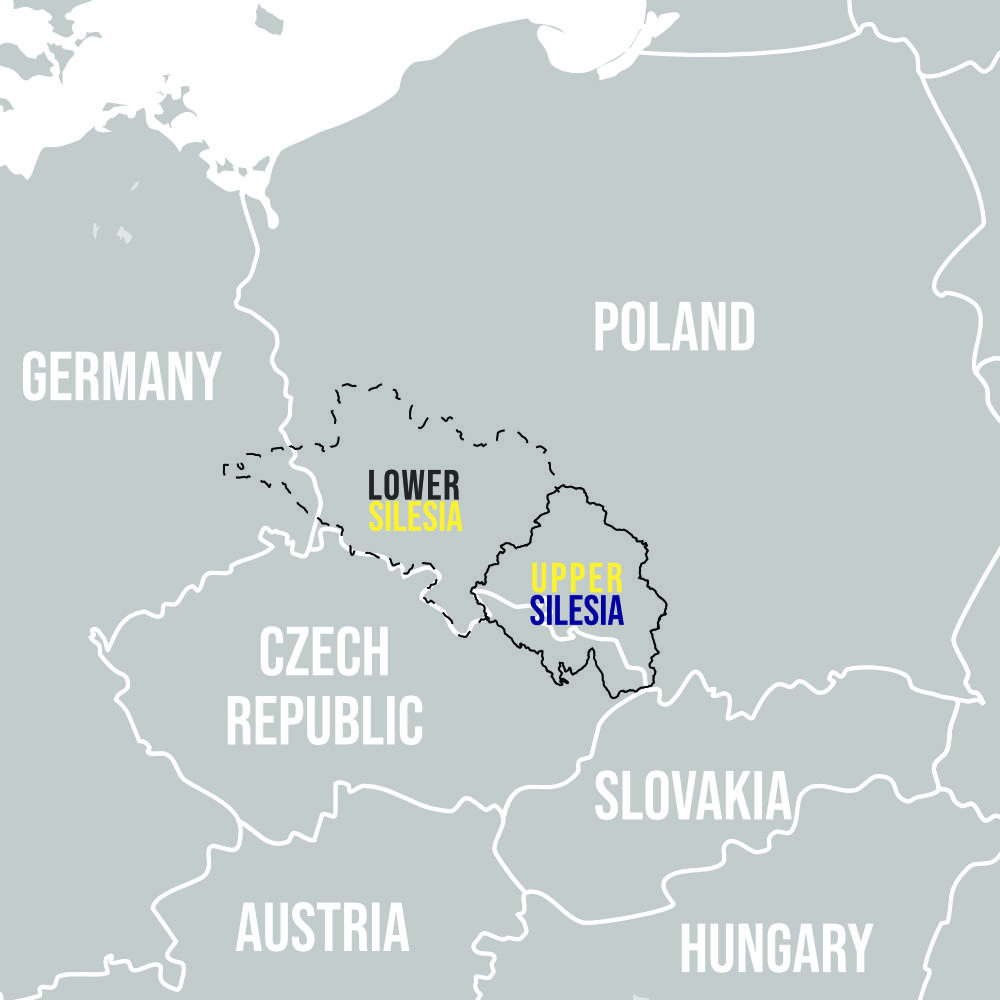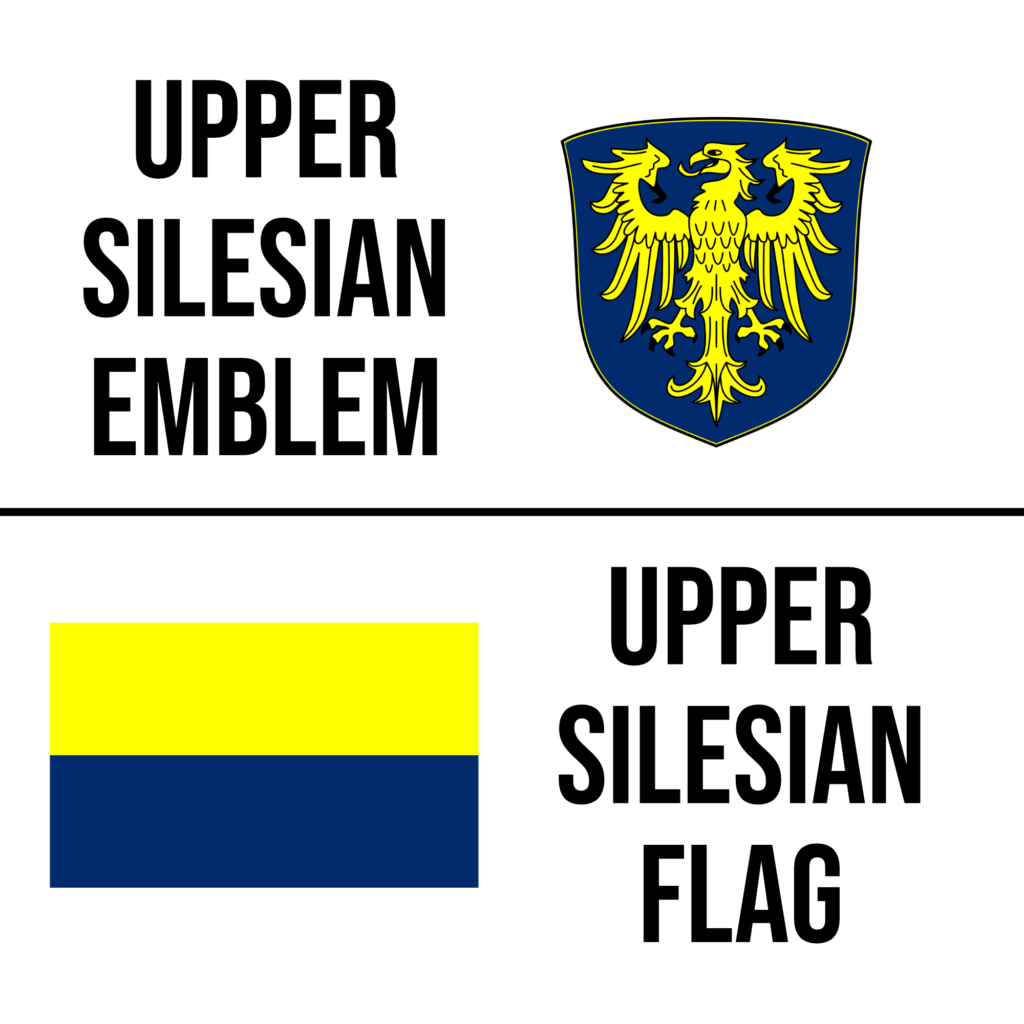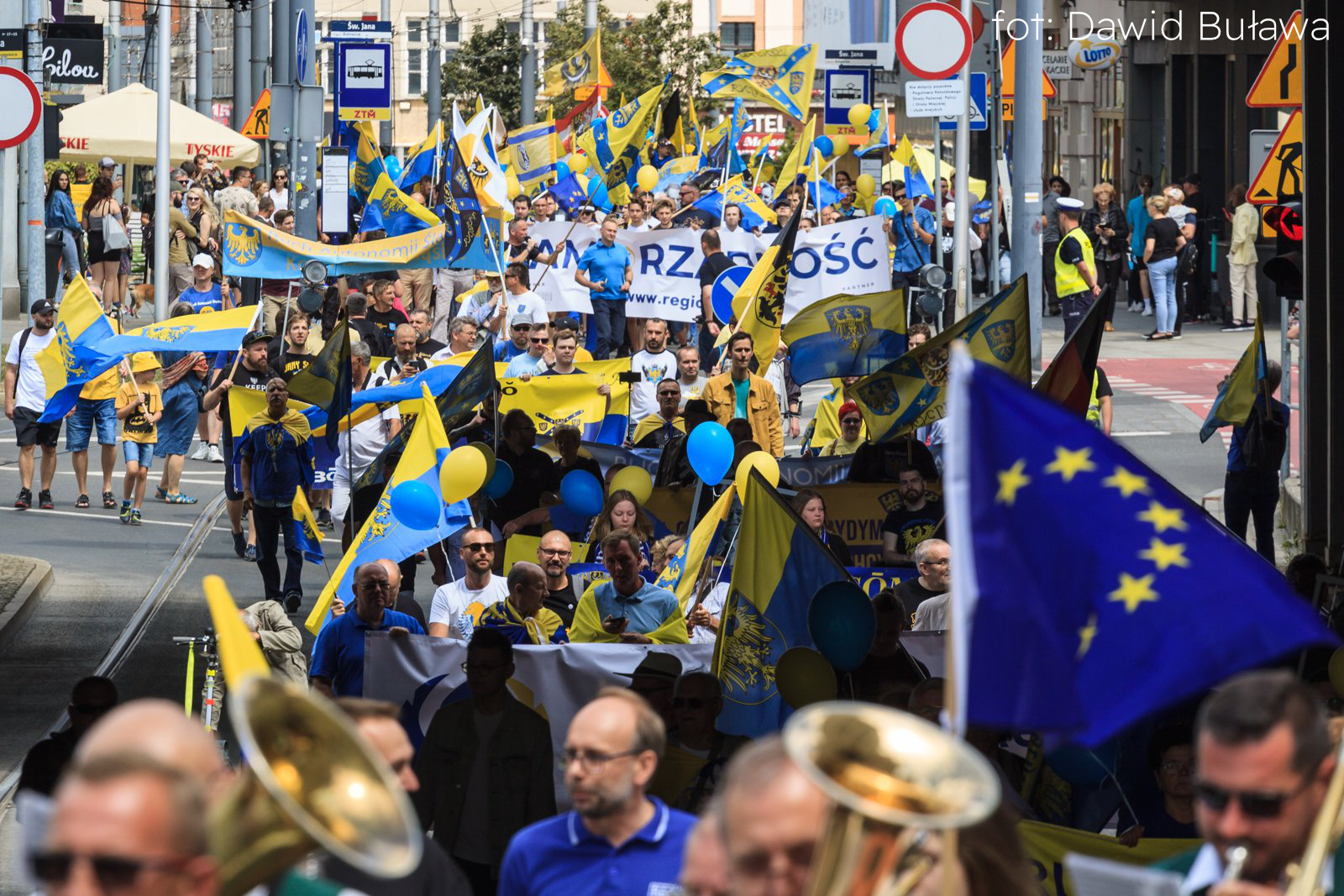Where is Upper Silesia?

Flag and Emblem
The coat of arms of Upper Silesia is a golden Eagle on a blue shield. The flag of Upper Silesia, like the Eagle, consists of gold and blue. Although there are various variants of the Silesian flag which are widely accepted, such as the variant with the coat of arms on the flag.

So why just Upper Silesia and not Silesia?
Brief History
Until 1918 – Silesia Up to the Great War
The history of Upper Silesia is a good one to start with in the year 875, when the Silesian territories came under the Great Moravian Reich. Later, until 1194, Silesia constantly passed between Czechs and Poles, with moments of Silesian independence. From 1194 to 1627 (with small breaks) is the time when Silesia was a de facto independent state(s). In 1627 Silesia came under Austrian rule and our sovereignty gradually diminished, and remains so till this day. In 1742, after Prussia won the First Silesian War, most of Silesia went to Prussia. In the mid-18th century, the first coal mines begin to show up in Upper Silesia, starting the Industrial Revolution in Silesia. In the 19th century, Upper Silesia is one of the most industrialized parts of the world.
1918-1939 – Upper Silesia’s Dream of Independence
In 1918, Germany loses the First World War and Silesia’s historical enemy, Poland, is reborn on the map. Silesians, wanting to take advantage of the weakness of the lost Germany, build organizations leading to the declaration of Upper Silesian independence. Silesian demands are presented at the peace conference in French Versailles. There was also a proposal to organize a plebiscite in Upper Silesia, the options were to remain in Germany, merge with Poland, or create an independent Upper Silesian state. This proposal is agreed to by the British, Italians, Americans, against were the French, because they knew that in such a scenario the majority would vote for a free state. The French were very keen that such a rich region should fall to Poland, their new ally. Ultimately, the French have the most to say, so a plebiscite is decided, with only Germany or Poland as options. A plebiscite takes place in 1921, with 59.6% of the people voting to remain in Germany. The Poles, as well as the French, are very uncomfortable with such a scenario, but they were ready for such an eventuality. They fabricate a so-called “uprising”, putting degraded a day before Polish soldiers, across the Silesian border, and force the Silesians to fight against themselves. After this fratricidal struggle, the Poles demand that Upper Silesia be divided, so that its richest part falls to Poland. This is what happens. In the 20-year interwar period, Silesia is divided between Germany, Poland and Czechoslovakia.
After 1939 – Dark Times
During World War II, all of Silesia is placed within the borders of the Third Reich. In turn, after the war, Stalin, the USSR dictator, as compensation for the eastern Polish lands taken away, gives the Poles the vast majority of Silesia – not only Upper Silesia, but also Lower Silesia. Nearly everyone from Lower Silesia either fled to Germany or were forced to leave and seek refuge there. In Upper Silesia, the situation is similar, but not everyone is able to leave. Poles immediately after the war began the process of Polonization, banned the German language, and for using Silesian language one could not hope for any better prospects in work or society. From 1945 to 1952, Polish concentration camps operated in Silesia, where Silesians classified as enemies of the Polish nation were tortured. Silesians were forced to forget their language and culture.

Current Situation
